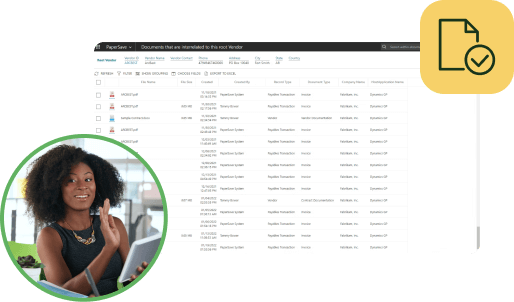
Wadih Pazos
Wadih founded both PairSoft and PaperSave. He is an avid technologist who specializes in streamlining operations and maximizing productivity.
View all posts by Wadih PazosWadih Pazos

Business 2 Community raised an important issue regarding security: identity theft. The source noted that hacking into a protected online database is significantly more challenging for would-be identity stealers than intercepting mail containing important documents.
Even simple measures, such as passwords and identity verification questions, can help keep confidential information secure.
Other potential concerns facing companies that primarily use physical documents are fires, floods, or other damage-related crises, as Chuck Cohn, CEO of a technology company, pointed out in an article for Forbes.
If the office is closed for whatever reason—like severe weather, infestation, and carbon monoxide leak, among others—it becomes impossible to access files. Electronic document management systems ensure that businesses can keep tabs on their files from anywhere in the world with Internet access.
Saving time, saving money, saving space, saving resources, saving hassle—there is a pretty long list of things you can save by making the switch to paperless.
For starters, consolidating all your files onto a computer database makes organizing and finding those files much easier. John Brownlee, a small-business owner who made the transition himself, wrote for Cult of Mac to attest that converting his home office to paperless has completely changed the way he does business.
He reported that he has become far more organized as both a person and a business owner with the subtraction of paper clutter from his life. File cabinets take up huge amounts of space, especially for small-business owners or people who work from a home office.
Imagine what could be done with all that extra space; maybe you want to get a beanbag chair or a foosball table to help keep the atmosphere relaxed and stress-free!
Okay, you’ve convinced me. Now…how do I get started?
Great! Glad to have you on board.
Fortunately, there is plenty of information out there about setting up your own paperless office. Lots of companies have already made the transition, and a number of individuals, like Brownlee, are excited to share their experiences.
The most important piece of technology to have is a quality scanner and document feeder, and there are mobile device apps that can serve the same function if you’re out of the office. The next step, Cohn said, is to ensure that employees are properly and thoroughly trained in the technology, because it can be difficult to learn the ropes of a completely new method of doing things.
And, of course, it’s imperative that once the system is in place, it is utilized correctly. Every document should be scanned immediately after being received, and then disposed of via paper shredder (and, of course, the remnants can be recycled).
Getting into this habit takes time, but once it’s established, it becomes a part of your daily routine and makes running a business much, much easier.
Switching to a paperless office is a big decision to make. It will require much thought, and implementation is not immediate. But over the course of time, it is a worthwhile venture considering the level of efficiency and security your business will achieve.
Automated workflows empower your team to focus on larger, more complex initiatives without having to think about small processes.


Many organizations start with manual receipt handling, fragmented card feeds and slow AP processes. Implement AI agents to auto-capture receipts, route approvals, enable punch-out buys and post to the ERP.
Result: faster batching, fewer errors and cost savings. “This saves us hours every month.”
Many organizations face slow, paper-heavy AP and fragmented procurement that waste time and inflate costs. AI Agents can automate approvals, PO matching and record sync to improve speed, accuracy and control. Client quote: “It freed up hours and made our process reliable.”
Operational drag and rising costs slow growth: teams waste time on manual tasks, misaligned priorities and opaque processes. AI Agents help automate routine work and coordinate actions across teams. “We’ve lost time to repeats and handoffs,” says a typical client.
Companies struggle with manual procurement, fragmented approvals, and costly integrations that slow growth and obscure spend. Our AI Agents streamline requisitions, POs, and invoice matching to cut manual work and improve visibility. “We were wasting time and missing insights,” says a client.

Many teams start with fragmented PO/AP systems, manual matching and delayed financial reporting. Deploying AI agents to automate PO checks, real-time encumbrance tracking and invoice matching reduces processing time and errors, delivering live budgets and faster closes. “Finally, we can see current balances and approve instantly.”
Many companies juggle growing invoice volumes and legacy systems. They struggle with manual processes, compliance gaps and limited headcount. Our AI Agents automate integrations, enforce rules and surface exceptions. The typical outcome: faster closes and measurable ROI. “We stopped chasing invoices.”